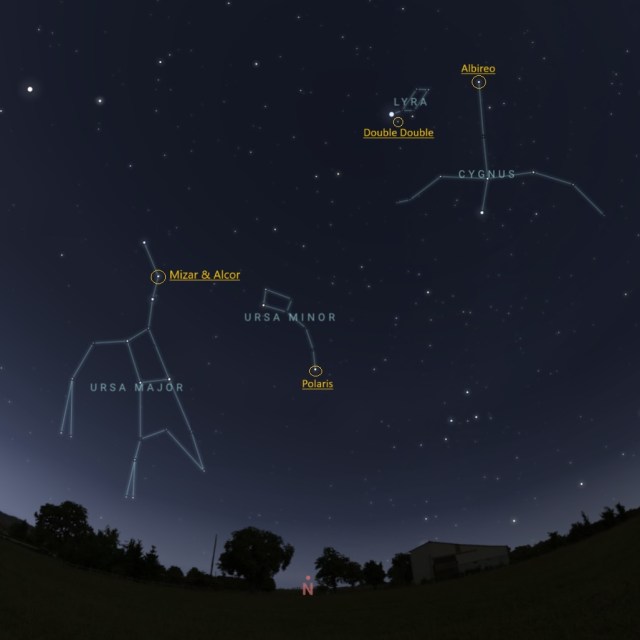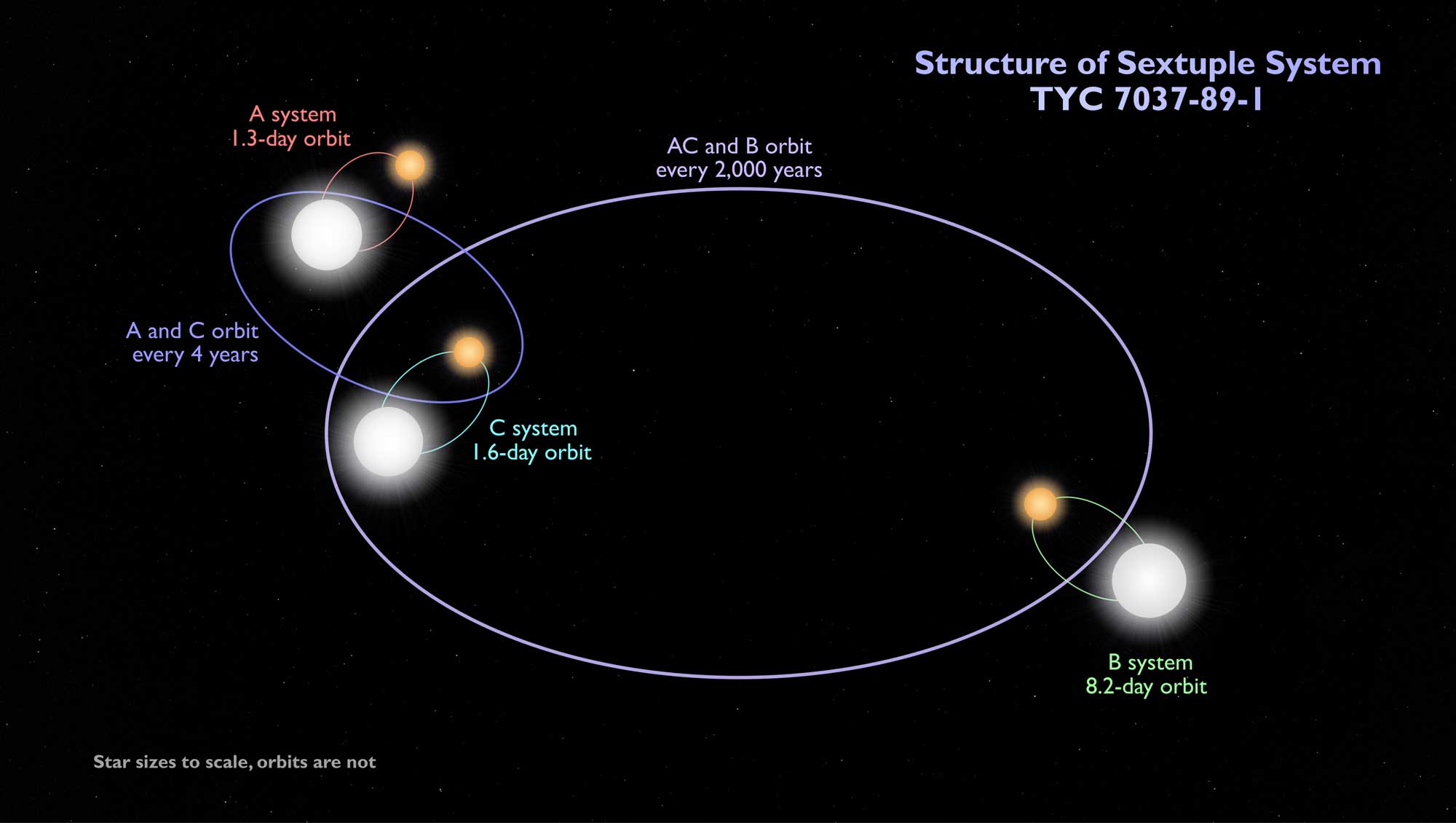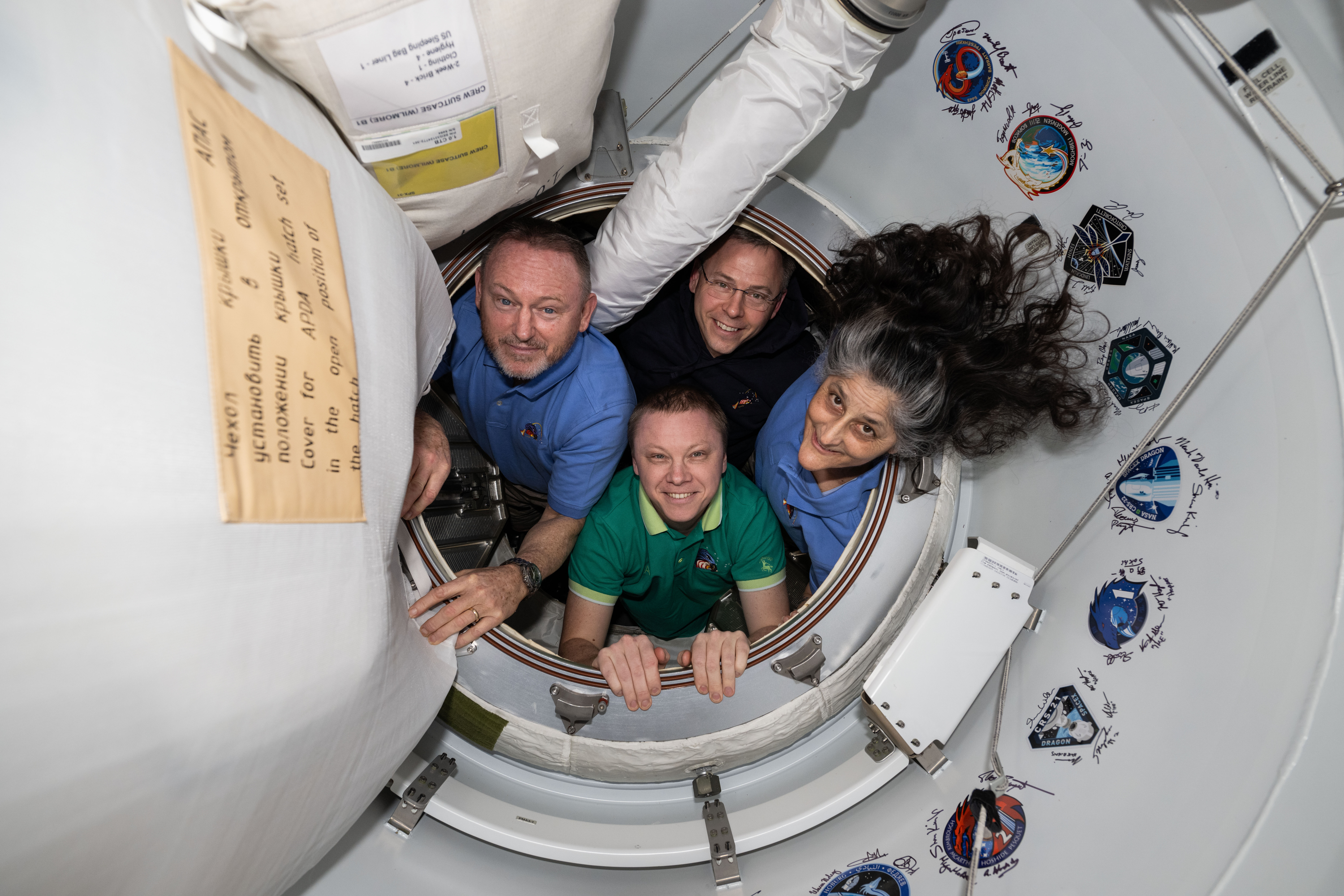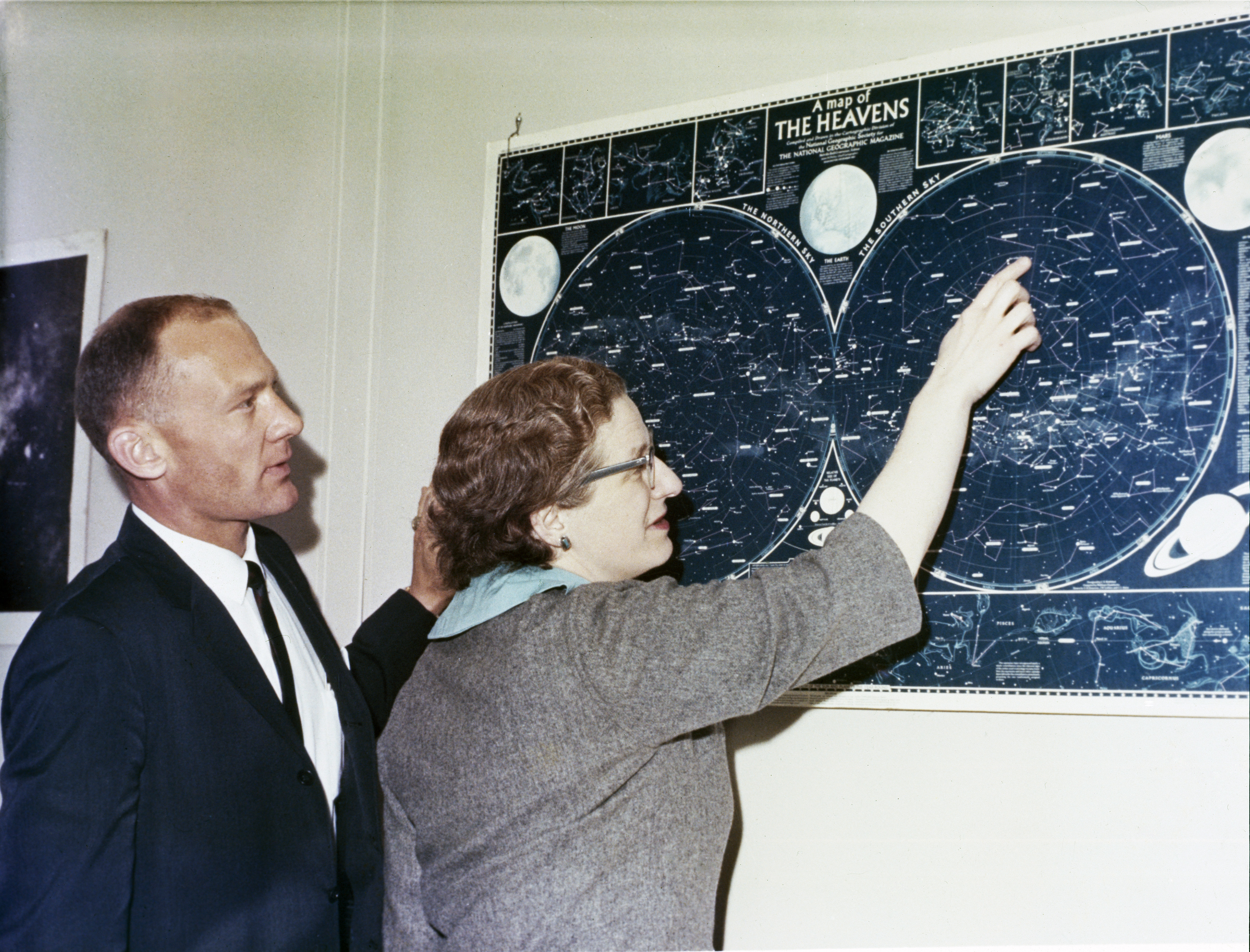August’s Night Sky Notes: Seeing Double
Your eyes aren’t playing tricks on you – you’re seeing double stars through that telescope! Learn about which double stars to spot this summer with August’s Night Sky Notes!

2 min read
August’s Night Sky Notes: Seeing Double
by Kat Troche of the Astronomical Society of the Pacific
During the summer months, we tend to miss the views of Saturn, Jupiter and other heavenly bodies. But it can be a great time to look for other items, like globular star clusters such as Messier 13, open star clusters such as the Coma Star Cluster (Melotte 111), but also double stars!
What Are Double Stars?
If you have seen any movies or read any books that refer to having two suns in the sky, that would be a double star system. These star systems typically come in two types – binary and optical doubles. Binary stars are two stars that are gravitationally bound and orbit each other, and optical double stars only appear to be close together when viewed from Earth, but in reality, are extremely far apart from another, and are not affected by each other’s gravity. With a small telescope, in moderately light polluted skies, summer offers great views of these stellar groupings from the Northern Hemisphere:
- Double Double: also known by its technical name, Epsilon Lyrae, this multiple star system appears as one star with naked eye observing. But with a small telescope, it can be split into ‘two’ stars. A large telescope reveals Epsilon Lyrae’s secret – what looks like a single star is actually a quadruple star system!
- Albireo: a gorgeous double star set – one blue, one yellow – in the constellation Cygnus.
- Polaris: while technically a multiple star system, our North Star can easily be separated from one star to two with a modest telescope.
- Mizar and Alcor: located in the handle of the Big Dipper, this pair can be seen with the naked eye.

Aside from looking incredible in a telescope or binoculars, double stars help astronomers learn about measuring the mass of stars, and about stellar evolution. Some stars orbit each other a little too closely, and things can become disastrous, but overall, these celestial bodies make for excellent targets and are simple crowd pleasers.
Up next, learn about the Summer Triangle’s hidden treasures on our mid-month article on the Night Sky Network page.
What's Your Reaction?



















.jpg?#)
































